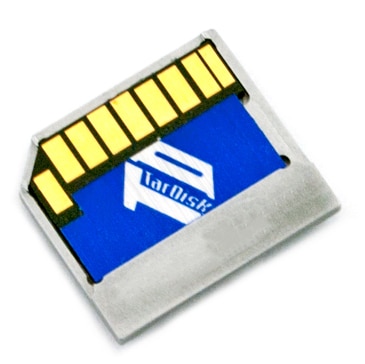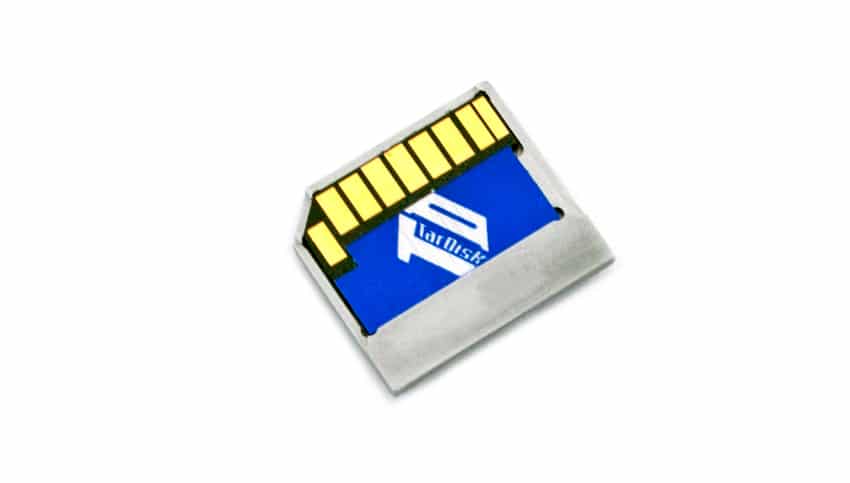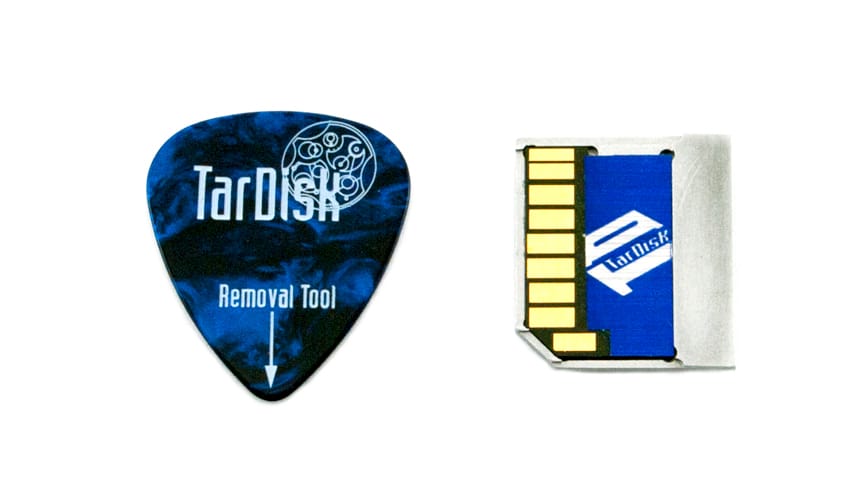
TarDisk’s line of expansion cards addresses one of the most common issues for MacBook users: running out of disk space. Although there are many of products available that can provide users with more storage space (e.g., external drives, SSD replacements), TarDisk is the only aftermarket product that is capable integrating with the internal drive without voiding Apple’s warranty. Users can add up to 256GB of storage to their MacBook Pro or MacBook Air with TarDisk’s simple plug and play design, which discreetly occupies the SD slot. TarDisk’s Pear 2.0 software connects (“Pears”) the card to the MacBook, immediately adding either 128GB or 256GB of storage. TarDisk imposes a negligible increase in power consumption, only amounting to roughly 5 minutes of battery use over a 7-hour period.

Once TarDisk is “Peared” with a compatible MacBook’s internal drive, it becomes a “semi-permanent” expansion to the device’s storage. This is advantageous for the user because it yields the best possible performance out of TarDisk while also allowing TimeMachine to access all stored data. In the event that a user needs to remove TarDisk (e.g., accessing SD card data), the card must first be “un-peared” in an eight-step process. Users that wish to retain their ability to easily remove TarDisk can simply refrain from “Pearing” it to their drive. Doing so treats TarDisk as an “integrated” portable drive. This method would only be encouraged for users that frequently use their SD slot, since doing so compromises the integrative advantages of creating one solitary drive.
TarDisk functions with select virtualization programs (e.g., Parallels, VM Fusion), but is not compatible with non-Apple hardware or Boot Camp partitions. It is worth pointing out that TarDisk can expand the memory of only MacBook Air and MacBook Pro models; the MacBook, Apple’s newest notebook, lacks the required SD port.
TarDisk is available in 128GB and 256GB models, which carry a price tag of $148 and $399, respectively. TarDisk offers a 1-year warranty and 30-day return policy.
Specifications
- Models
- 128GB (A13A-128)
- 256GB (A13A-256)
- Chassis: Aluminum
- Flash: 128Gb MLC NAND
- Performance: up to 90MB/s (UHS-1, speed class-3 or higher)
- Power: 70mW
- Compatibility
- MacBook Pro (CD): 13-inch, 15-inch
- MacBook Pro (Retina): 13-inch, 15-inch
- MacBook Air: 13-inch
- Dimensions (inches): 2.1 x 2.4 x 0.2
- Weight: 0.3oz
- Warranty: 1 year
Design and Build
TarDisk uses an aluminum “UniBody” frame that was designed to sit flat against the MacBook body. Since TarDisk was built to occupy the SD port, the card closely resembles an SD card. The face of the card has white branding against a blue background, with the capacity listed on the bottom left. The gold connector pins are exposed on the same side. TarDisk also comes with a blue removal tool.
Installation
Installation is simple enough. Users should first make sure that they have created a Time Machine backup of all of their work. Once the backup is completed users need to make sure that the computer’s Filevault is turned off. From there they can insert the TarDisk and follow the wizard to add space to their drive. In our case the computer rebooted a few times but overall the drives was quickly and easily installed on the MacBook.
Performance
Using our Consumer Testing Platform, we measured the transfer speeds from TarDisk using IOMeter. It is important to note that once the TarDisk is integrated with the drive on the computer it cannot be tested separately. In our case we successfully paired or “peared” the device and then successfully removed it for testing. The removal itself wasn’t overly difficult (it feels a tad more complicated that it needs to be) but nowhere near as easy as installation. Once removed, we tested the TarDisk in a similar fashion as we would an SD card.
In our 2MB sequential benchmark, TarDisk posted 78.85MB/s in read functions and 74.86MB/s in write. We saw an improvement in read performance and drop in write performance when switching to our random 2MB benchmark, in which TarDisk posted 76.02MB/s and 52.73MB/s, respectively. In our final benchmark (random 4k), TarDisk exhibited read and write transfer speeds of 5.52MB/s and 2.54MB/s, respectively. While some might ask why not just use a normal SD card for this type of role, its important to look at the 2MB random write transfer tests. Many SD cards will excel at read performance or sequential writes, but fall flat for 2MB random transfers (single digit MB/s). The TarDisk offered much higher speeds in this scenario, although with that said, it is still much less performance than what a full fledge SSD can do.
For the OS and initial data, the performance felt will be that of the stock SSD. In the case of our 128GB MacBook Air, as soon as it spills over to 129GB used, that is when speeds of that additional data being accessed drops to the speeds we measured. So if you wanted to start from scratch with the TarDisk, it would be best to install all your applications first, then add in all your media and whatnot after. This way your key applications still live and operate on the main SSD at full speeds, while excess data gets pushed off onto the slower SD-card expansion storage.
Conclusion
TarDisk provides users with the ability to expand the storage their MacBook Air or MacBook Pro by either 128GB or 256GB. If users choose to “Pear” TarDisk to their computer, through a process in which the expansion cards become integrated with a MacBook’s internal drive, they gain extra storage while maintaining compatibility with Apple TimeMachine, VM Fusion, and Parallels. Integrating TarDisk is described as a “semi-permanent” increase in storage, which requires an eight-step uninstallation process to reverse. The implication of this feature is that users are sacrificing access to their SD ports in exchange for a more integrated system (resulting in enhanced performance and compatibility). If users wish to increase their storage without integrating TarDisk, they can simply use it as if it were any other type of secondary volume. Our benchmarks showed that TarDisk handles transfers decently well as a standalone drive, with a performance profile that is comparable to that of an very high-end SD card. While peak transfer speeds topped at 79MB/s read and 75MB/s write in our 2011 MacBook Air, random 2MB transfers, which pummel most SD cards, measured 53MB/s. So faster than a DIY SD card approach, but still under what the stock drive offers.
Pros
- Plug and play
- Does not void Apple’s warranty
- Can integrate with internal drive
Cons
- Loss of SD port access (if integrated)
- Difficult to uninstall
The Bottom Line
TarDisk is a one-of-a-kind product that increases the storage capacity of compatible MacBooks in minutes.
Sign up for the StorageReview newsletter

